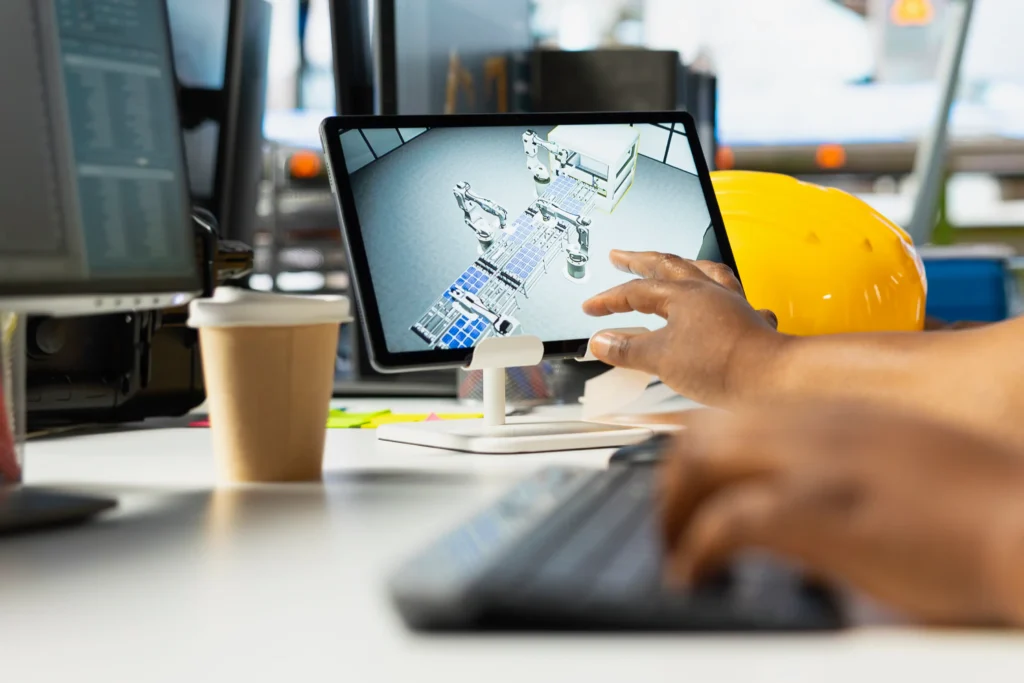Embracing Technology and Trends for Smarter, More Efficient Projects

The construction industry is undergoing a profound transformation driven by technology and innovative trends. From automation and digital tools to sustainable practices, construction is becoming more efficient, precise, and environmentally responsible. At AA Building Co., we believe staying on top of these advancements is essential to delivering high-quality, cost-effective, and future-proof projects. Let’s explore how the latest technologies and trends are shaping the future of construction and why embracing them is key to success. 1. Building Information Modeling (BIM): Revolutionizing Project Management One of the most game-changing technologies in construction today is Building Information Modeling (BIM). BIM is a digital tool that enables architects, engineers, and contractors to collaborate on a 3D model of a building or infrastructure project. Unlike traditional blueprints, BIM provides a comprehensive, real-time view of a project, allowing for better planning, design, and execution. BIM enhances project accuracy, reduces errors, and enables better decision-making throughout the construction process. With BIM, teams can visualize potential problems before they occur, optimize building systems, and even manage post-construction maintenance. This not only saves time and money but also reduces waste and improves sustainability by allowing for more efficient resource allocation. 2. 3D Printing in Construction: Precision and Customization 3D printing is another revolutionary trend in construction, offering incredible precision and customization. By using 3D printers to create building materials or even entire structures layer by layer, construction companies can reduce waste, lower costs, and produce highly detailed components. From 3D-printed concrete walls to custom-designed structural elements, this technology is pushing the boundaries of what’s possible in construction. Additionally, 3D printing can enable the rapid construction of homes and buildings in areas affected by natural disasters or housing shortages, making it a vital tool in addressing global construction challenges. 3. Drones: Transforming Site Surveys and Inspections Drones are rapidly becoming indispensable tools in construction, offering a cost-effective and efficient way to conduct site surveys, monitor progress, and perform inspections. Drones can capture high-resolution images and videos, providing valuable data on project status, site conditions, and any potential issues. In the past, site inspections could be time-consuming and labor-intensive. Now, drones can quickly map out terrain, measure distances, and detect issues that may have gone unnoticed. This technology not only enhances safety by keeping workers off dangerous sites but also accelerates project timelines by streamlining data collection and analysis. 4. Sustainable Building Materials and Green Construction Sustainability is at the heart of today’s construction trends. As the demand for eco-friendly buildings continues to rise, more companies are turning to sustainable building materials and practices. Innovations in green construction are paving the way for energy-efficient, environmentally responsible buildings that are both cost-effective and healthier for occupants. Some of the most popular sustainable materials include recycled steel, bamboo, hempcrete, and low-carbon concrete. Additionally, energy-efficient systems like solar panels, green roofs, and smart HVAC technologies are being incorporated into both new builds and renovations. The shift toward green construction not only helps reduce the environmental footprint but also enhances the long-term value of buildings. 5. Smart Construction: Integrating IoT and Automation The rise of the Internet of Things (IoT) and automation is transforming the way buildings are constructed and managed. Smart construction involves integrating connected devices, sensors, and automation systems to improve efficiency, safety, and monitoring throughout the construction process. For instance, IoT-enabled sensors can track real-time data on everything from materials inventory to worker productivity. Automated machinery and robotic construction tools can carry out repetitive tasks with greater precision and speed. Additionally, connected systems in buildings can monitor energy use, security, and other factors, ensuring optimal performance even after construction is complete. 6. Modular and Prefabricated Construction: Speed and Flexibility Modular and prefabricated construction methods are gaining traction due to their ability to speed up the building process while maintaining high standards of quality. These methods involve constructing sections or modules of a building off-site in a factory setting and then assembling them at the final location. This approach offers numerous benefits, including faster construction times, reduced waste, and cost savings. It also provides greater flexibility in design, as modular components can be customized to fit specific needs. This trend is particularly popular in residential construction, hotels, and even healthcare facilities, where speed and scalability are essential. 7. Augmented Reality (AR) and Virtual Reality (VR) in Design and Training Augmented reality (AR) and virtual reality (VR) are transforming the way construction teams visualize and interact with designs. With AR and VR tools, designers and clients can «walk through» a building before it’s built, making it easier to spot potential issues and refine the design. These technologies are also enhancing safety training by creating realistic simulations of construction environments, allowing workers to practice navigating complex tasks without the risks associated with on-site training. By immersing workers in virtual environments, these technologies are helping to reduce accidents and improve safety standards. 8. AI and Machine Learning: Data-Driven Decisions for Smarter Projects Artificial intelligence (AI) and machine learning are making their mark on the construction industry by enabling smarter decision-making based on data analysis. AI algorithms can analyze massive amounts of data to identify patterns, predict project outcomes, and even optimize schedules and budgets. For example, AI can be used to predict when equipment will need maintenance, reducing downtime and improving productivity. Machine learning models can also assess risk factors, helping project managers make better decisions about safety, resources, and timelines. Conclusion The construction industry is rapidly evolving, and embracing the latest technologies and trends is key to staying competitive and delivering high-quality projects. Whether it’s through the adoption of BIM, the use of 3D printing, or integrating smart construction technologies, these innovations are driving greater efficiency, sustainability, and safety in the industry. At AA Building Co., we are committed to incorporating these cutting-edge technologies into every project we undertake, ensuring that our clients benefit from the most advanced, reliable, and cost-effective construction solutions available. The future of construction is here, and we’re excited to be part of this transformative journey.
Technology and Trends in Construction

Building smarter, faster, and more sustainably in Costa Rica The construction industry is undergoing a transformation. Innovations in technology, sustainability, and design processes are redefining what’s possible—and necessary—in modern architecture. At AA Building Co., we embrace this evolution not as a novelty, but as a foundation for delivering smarter, more resilient, and future-ready projects. From our experience in Costa Rica’s dynamic and demanding environment, here are the key technologies and trends shaping our approach to construction. 1. BIM (Building Information Modeling) for integrated design BIM allows us to design, visualize, and coordinate projects in three dimensions before ground is ever broken. It provides a centralized digital model for architects, engineers, and builders to collaborate seamlessly. In Costa Rica, where terrain, climate, and regulatory complexity vary, BIM helps us anticipate challenges and reduce costly on-site surprises. Key takeaway: BIM leads to better coordination, fewer delays, and more predictable outcomes. 2. Prefabrication and modular construction Speed and efficiency are increasingly critical. We are adopting prefabricated structural components, modular panels, and hybrid systems to reduce construction time and material waste—particularly valuable in remote or high-humidity locations. These methods improve safety, offer greater quality control, and reduce the environmental footprint of the build. Key takeaway: Modular solutions are redefining construction timelines and scalability. 3. Green building technologies With Costa Rica’s commitment to environmental leadership, we actively incorporate green technologies into our projects: We also follow guidelines from EDGE and LEED to ensure our projects meet or exceed sustainable building standards. Key takeaway: Technology and sustainability must go hand in hand. 4. Smart home and building automation Clients today expect more than beautiful spaces—they want intelligent functionality. We integrate: Key takeaway: Future-ready buildings are intelligent by design. 5. Data-driven design and digital fabrication We leverage tools like parametric design, 3D printing, and performance simulations to push creativity while maintaining technical precision. These tools help us create forms tailored to climate, topography, and function, while optimizing material use. Key takeaway: Innovation enhances both form and function when guided by real-world data. Final Thoughts At AA Building Co., staying ahead of the curve is not optional—it’s essential to delivering value. We believe technology is not replacing traditional craftsmanship, but elevating it to new levels of precision and performance. By embracing innovation and proven global trends, we continue to build architecture in Costa Rica that’s sustainable, efficient, and future-proof. See how we implement technology in real projects here, or contact us to bring innovation to your next build. Construction technology Costa Rica, BIM architecture, modular construction Costa Rica, green building trends, smart home design, sustainable construction, AA Building Co., innovation in construction, Costa Rica architecture firm